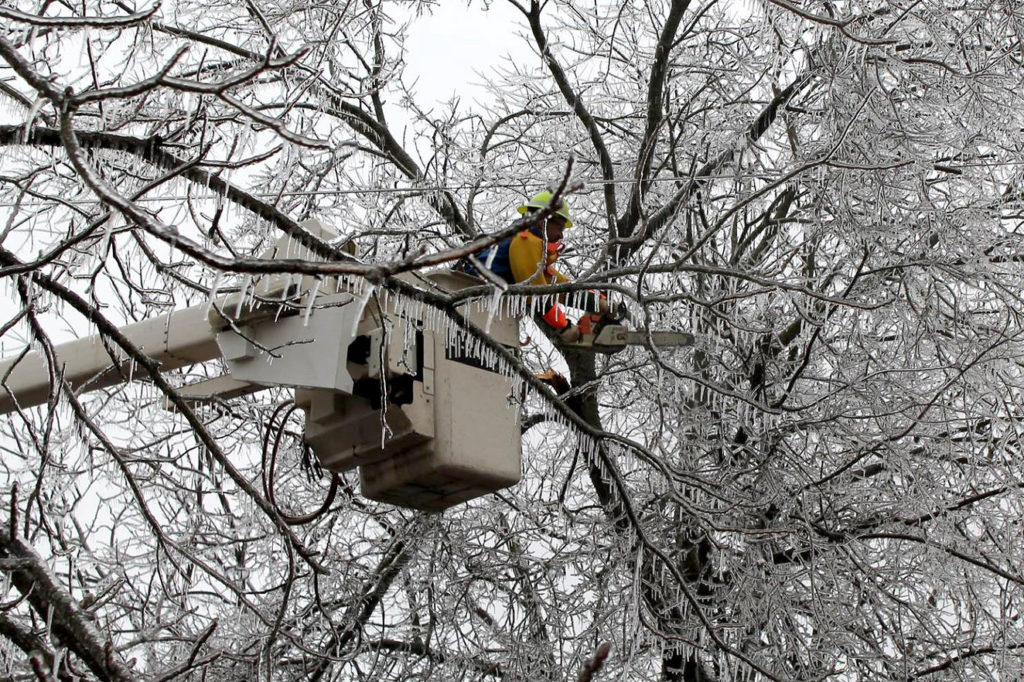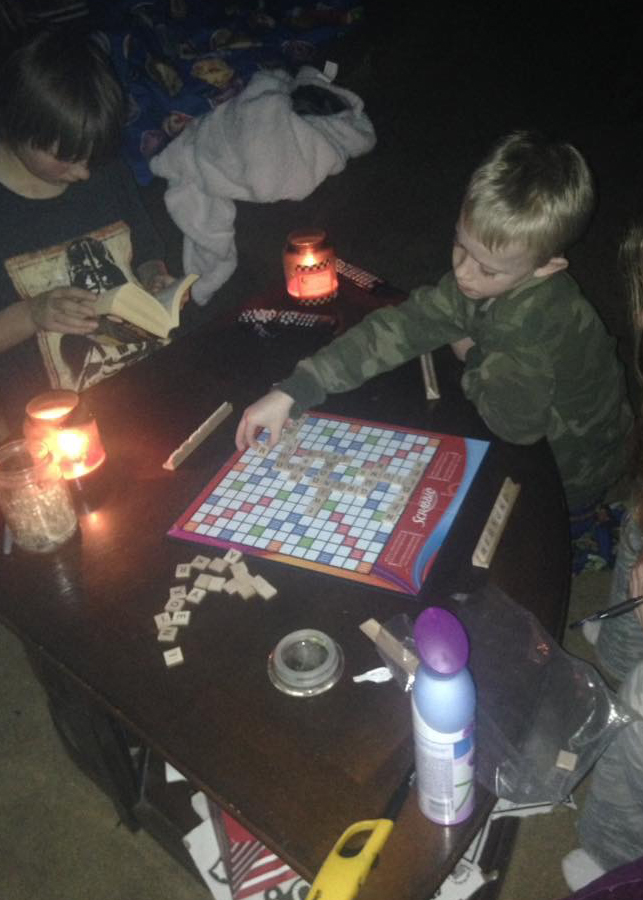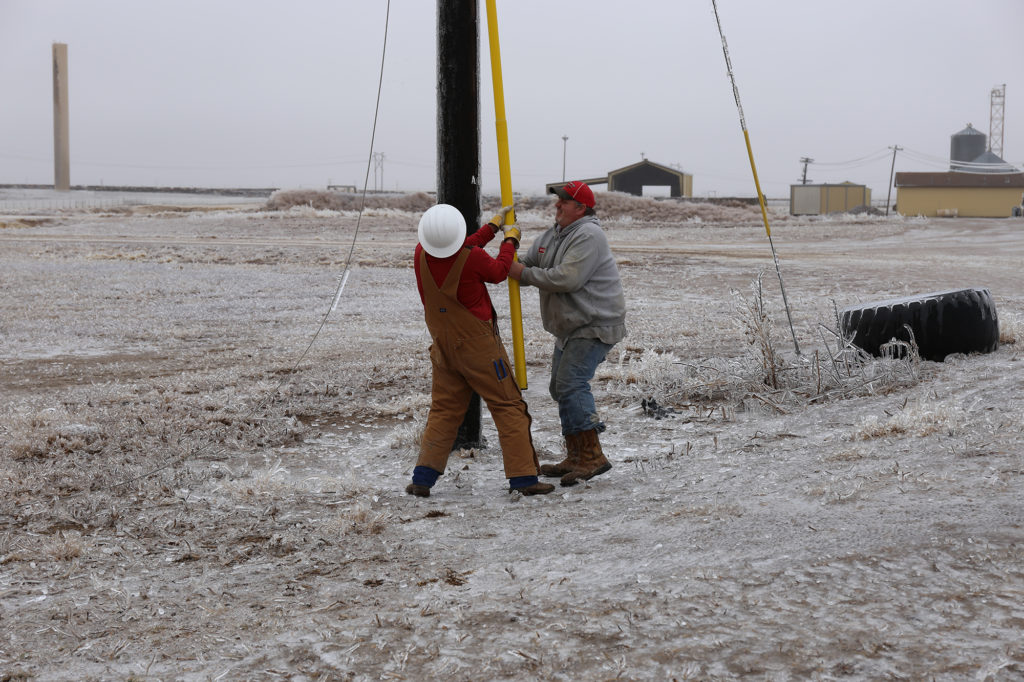
Ashley Dawson and her three sons were watching the NFL on television in their Bucklin, Kansas, home Sunday night when everything got dark.
“We were watching the Chiefs-Steelers game and there was about five minutes left in the fourth quarter and the power went out,” said Dawson.
For two days, Dawson used a small generator to power a space heater and charge her cell phone and tablet. She also made the most of the outage, amusing the boys with family time.
“At night we would play Scrabble by candlelight, and during the day we stayed busy taking advantage of the daylight,” said Dawson. “I also looked in on social media, including the Facebook page of my co-op.”
Dawson was among 9,000 of the 13,000 members of Victory Electric Cooperative who lost power Jan. 15 as a result of winter storms that dumped freezing rain on trees and power lines across parts of five states.

“We have about 3,000 miles of line and this storm hit every part of our system,” said Jerri Imgarten, Victory EC’s manager of marketing and communications. Ice accumulating on trees contributed to many of the outages, she said.
The Dodge City-based co-op suffered major damage to its system, and even with the help of five other co-ops from across Kansas, still had crews working through nearly 1,800 remaining meters Jan. 19.
“We’ve had tremendous support from our members,” said Imgarten. “They’re bringing in Gatorade, they’ve brought in doughnuts, and a local Italian restaurant brought in meals for 125 people for lunch.”
The co-op began urging members to prepare about five days before the ice storm hit, and gave out Victory Electric Ice Storm Survival Kits, filled with nonperishable snacks, a car charger, a gallon jug of water, batteries, some toiletries and games.
With phone circuits overloaded at the co-op’s offices, Imgarten used Facebook to keep members informed of restoration progress. She also launched a photo contest for members who sent in entries related to storm restoration and their efforts to weather the inconvenience.
“Ashley Dawson was our winner,” said Imgarten, who visited Dawson’s home to give her one of the kits shortly after power was restored Jan. 17.
“We’ve wanted to help members have a little fun during a bad situation,” said Imgarten, adding that crews are still finding broken poles and reconnecting homes and businesses that suffered service connection damage. “People have been patient, and we hope to wrap up the remaining restoration within 48 hours.”
Ice storm damage was widespread from North Texas and Oklahoma to Iowa and Nebraska and high winds contributed to problems further north.
“We prepared for the worst, and we got the ice that was anticipated and more,” said Sid Sperry, director of public relations, communications and research for the Oklahoma Association of Electric Cooperatives.
“In some areas, ice accumulations topped one-half to three-quarters of an inch,” during the Jan. 13-15 storms, said Sperry.

Heavy ice stressed lines, broke splices and snapped cross arms. Many Oklahoma co-ops deployed crews and contractors across their service territories to make repairs and handle more than 9,000 outages.
Six or eight co-ops sent mutual aid to Northwestern Electric Cooperative, headquartered in Woodward, and Hooker-based Tri-County Electric Cooperative, said Sperry.
More than a dozen co-ops in Oklahoma and 14 in Kansas reported damage, with most handling repairs with local crews. Co-ops in Missouri and Iowa and public power districts in Nebraska wrapped up repaired scattered outages quickly.
“Forecasting tools gave us the opportunity to look at this storm a week out,” said Jim McCarty, editor of Rural Missouri magazine.
McCarty, who also serves as spokesman for the Association of Missouri Electric Cooperatives, added that improved technology and equipment, along with lessons learned from past storms, allowed co-ops to restore service to about 7,000 affected meters by Jan 17.
“AMI [automated meter infrastructure] technology has reduced damage assessment time because crews can quickly locate affected circuits,” said McCarty. “Better management of rights of way and the availability of tracked vehicles enable crews to reach repair sites more easily, and that pays off with faster restorations.”
Derrill Holly is an NRECA staff writer.